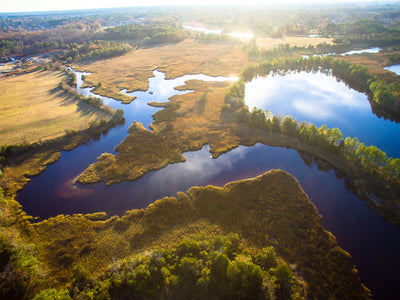Hidden Effects of Drought on Drinking Water
RSS
Emily Driehaus | Science Communication Intern
As the drought in the western United States continues to impact water supplies, the risk for long-term damage to drinking water systems increases daily. Although they are not always readily apparent, prolonged drought brings the potential for issues that can be costly to manage and cause problems for years to come.
Seawater Intrusion
Seawater or saltwater intrusion occurs near coastal areas when groundwater supplies become too low to keep seawater from flowing into groundwater aquifers. Groundwater meets seawater near coastal areas in transition zones, where the water pressure of groundwater keeps seawater from getting into aquifers. During a drought, these groundwater levels may not be replenished quickly enough to maintain enough water pressure to keep seawater out. Continued pumping of groundwater through groundwater wells can exacerbate this, as this further reduces groundwater pressure. When seawater does make its way into groundwater aquifers, the damage can be costly to manage. If the affected aquifer is used for drinking water, public water systems have to effectively treat the water to make it safe for drinking. Seawater intrusion may leave some water sources unusable, resulting in the need to find new sources in an already limited area.
Land Subsidence
Depleted groundwater can also cause land to sink, also known as land subsidence. When groundwater stores are not replenished, soil becomes compacted due to the lack of water pressure and the loss of volume groundwater takes up below the surface. Land subsidence can permanently damage groundwater aquifers, resulting in a decreased capacity even after groundwater stores are replenished. Continued pumping of groundwater wells can make land subsidence even worse, especially during a prolonged drought such as what is currently being seen in the western U.S.
Infrastructure Damage
Both seawater intrusion and land subsidence can damage critical infrastructure, specifically drinking water systems. Contamination from seawater intrusion can render some water sources unusable, which can be costly to fix. This can also result in the need for new pipes and systems to be built to use a different water source. Because drought also leads to water stagnation, bacteria and other microorganisms are able to grow in stagnant water and can contaminate drinking water supplies. Land subsidence can result in damage to groundwater aquifers and other equipment used in water systems, such as pumps. Underground pipes can also sustain damage when the soil gets compacted and sinks, resulting in pipe breaks and potentially damaging other parts of the system.
Other Articles We Think You Might Enjoy:Why Does My Tap Water Taste Like Dirt?
How Do Droughts Affect Your Drinking Water?
Uranium in Drinking Water: What You Need to Know




